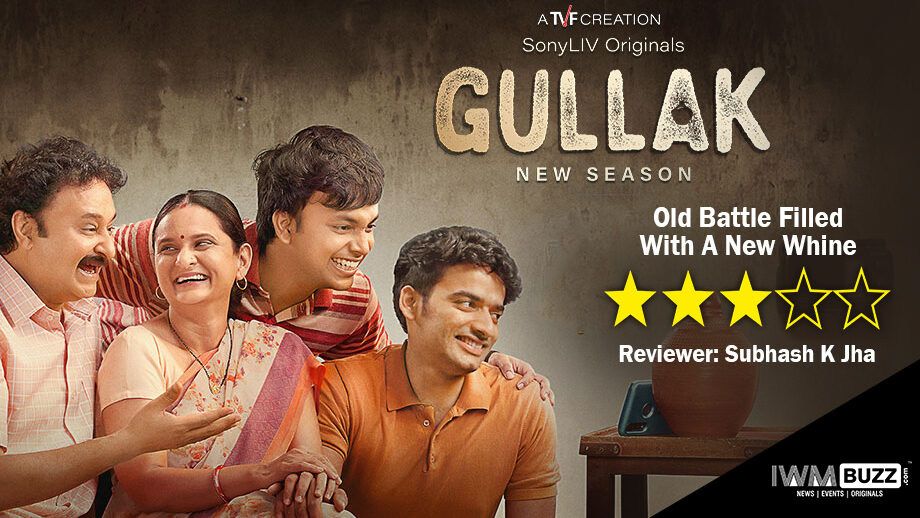Gullak Season 2(SonyLIV,5Episodes)
Rating: ***
Thank God for the Indian middleclass and its jugaadu optimism. There isn’t a problem that that can’t be “managed” with some amount of resourcefulness and a great deal of resilience. Normally webshows about low-income families in small North Indian towns are about glumness grime or crime or all three. This one is upbeat and filled with sunshine, and the optimism is not imposed on the plot.It is an old battle filled with a new whine.
To anyone who lives in a North India the Mishra parivar is eminently relatable.They are talkative and annoying but also likeable for their lack of affectations.They are at once Every-family and yet unique in their quirks and conflicts. Episode 2 of Season 2 is my favourite . This is where Papa and his two sons take over the kitchen for Mummy’s kitty party. The gentle digs at gender stereotypes accompanied by the guffaws of the ladies who can’t help being tickled by watching the Mishra men sweat it out at the gas stove—“Mishraji what is this combination of dahi vada and tea?” is evidence of the sharp-witted writing that has gone into the series.
Papa Mishra and his two sons get a solid dressing-down from Mama Mishra at the end of the episode 2 where she reminds them not too gently of how much she has invested into her family.This family doesn’t believe in bottling it in. Taunts and jeers are openly exchanged and shared. The two sons respect their parents but also poke merciless fun at their hypocrisy.
In Episode 3 Mishraji flares up when a wedding invitation is sent through his elder son. The ego, you see, is always agile and alive.And though this a caring family it is also deeply selfserving knowing that at the end of the day, it is each to his own.
This is as good a place as any to say the monstrously talented Gitanjali Kulkarni and Jameel Khan are perfectly cast in roles that require them to be convincing as individuals, a married couple and a collective team representing every wage-earning North Indian middleclass family. On all the three levels, the two actors are admirably in-charge.
From the rest of cast , only Sunita Rajwar as an aunt provides a thoroughly entertaining caricature of the talkative meddlesome busybody. By the way, why is the younger son played as some kind of a mentally challenged overgrown kid? Was this subconsciously done? Or did it just happen? Also the drama of what Tolstoy once described the “unhappy family” is missing. The Mishras may be unhappy about not being able to afford an LD television. But they aren’t sulking about it.

